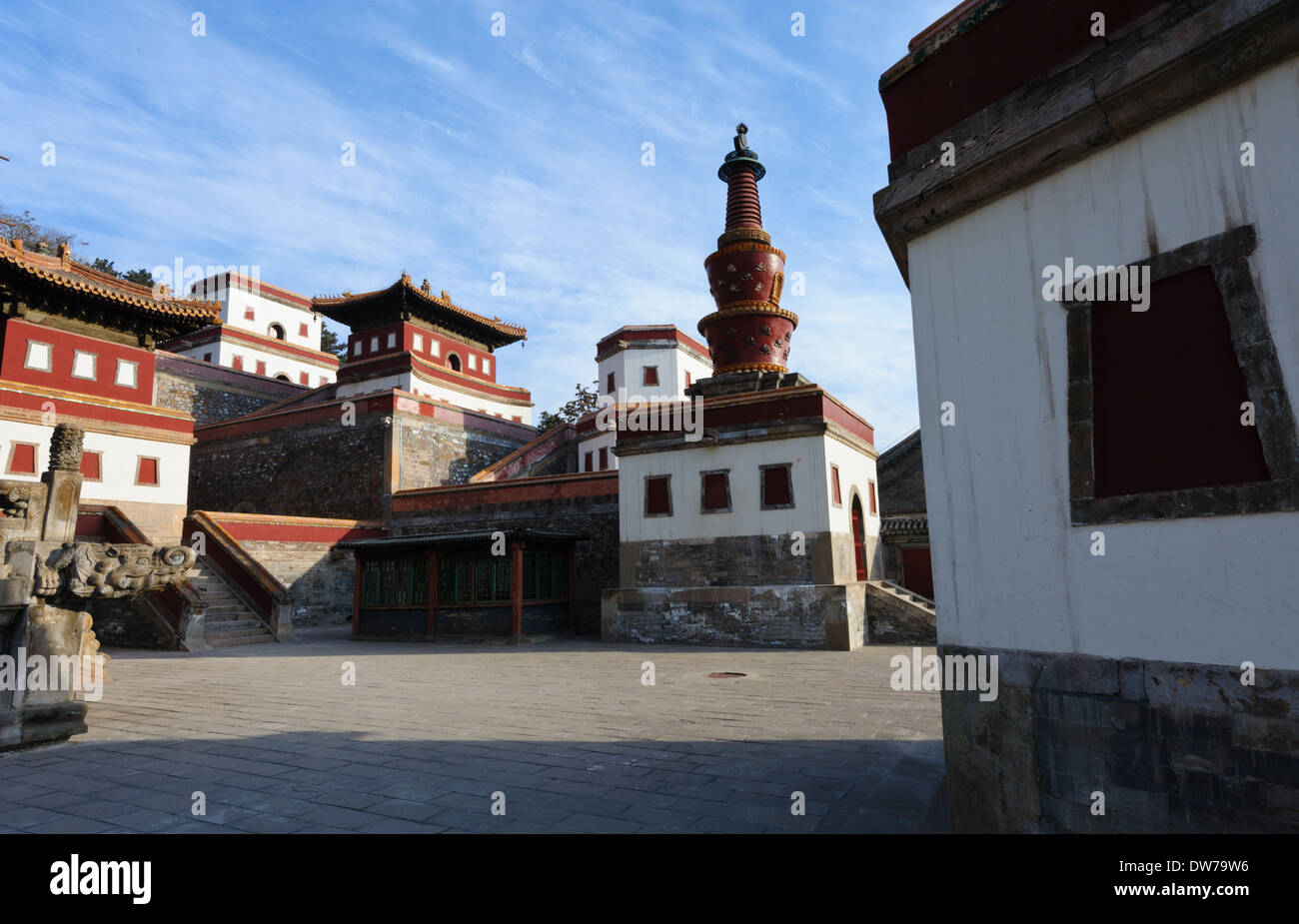The Puning Temple complex. Chengde, Hebei Province, China.

Image details
Contributor:
Bert de Ruiter / Alamy Stock PhotoImage ID:
DW79W6File size:
30.5 MB (1 MB Compressed download)Releases:
Model - no | Property - noDo I need a release?Dimensions:
4071 x 2616 px | 34.5 x 22.1 cm | 13.6 x 8.7 inches | 300dpiDate taken:
22 December 2013Location:
Asia Peoples Republic of China Hebei Province Chengde Puning TempleMore information:
From Wikipedia, the free encyclopedia: The Puning Temple literally: "Temple of Universal Peace") of Chengde, Hebei province, China (commonly called the Big Buddha Temple) is a Qing Dynasty era Buddhist temple complex built in 1755, during the reign of the Qianlong Emperor (1735-1796 AD) to show the Qing's respect to Tibetan Buddhism. It is located near the Chengde Mountain Resort, and alongside the equally famed Putuo Zongcheng Temple, it is one of the "Eight Outer Temples" of Chengde. Much how the Putuo Zongcheng Temple was modeled after the Tibetan Potala Palace, the Puning Temple was modeled after the Samye Monastery, the sacred Lamaist site in Tibet. The front temple was constructed in the Chinese style, although the temple complex follows both Chinese and Tibetan architectural styles. The Puning Temple also houses the world's tallest wooden sculpture of the Bodhisattva Avalokiteśvara (22.28-meter-high and 110-ton), [2][3] hence the Puning Temple is often nicknamed the "Big Buddha Temple". The complex features temple halls, pavilions, drum towers and bell towers.